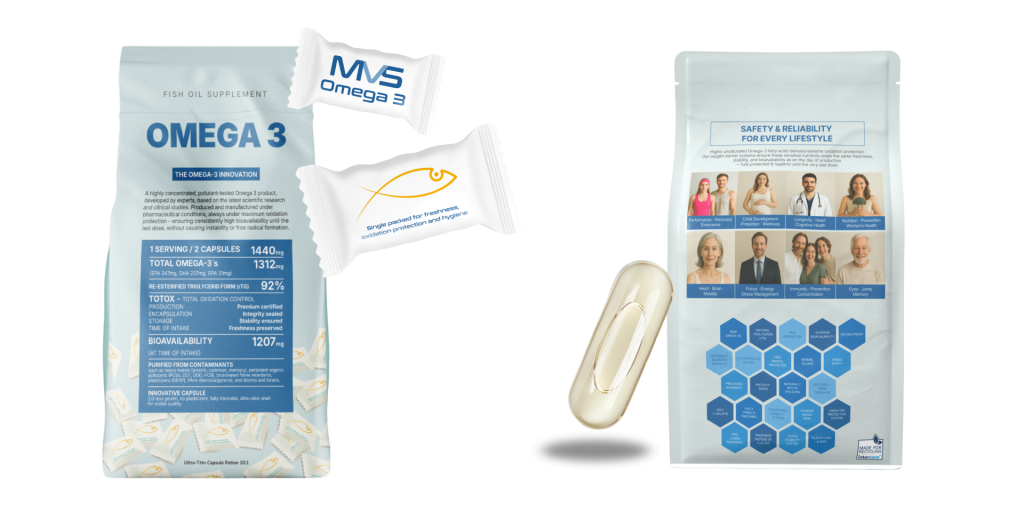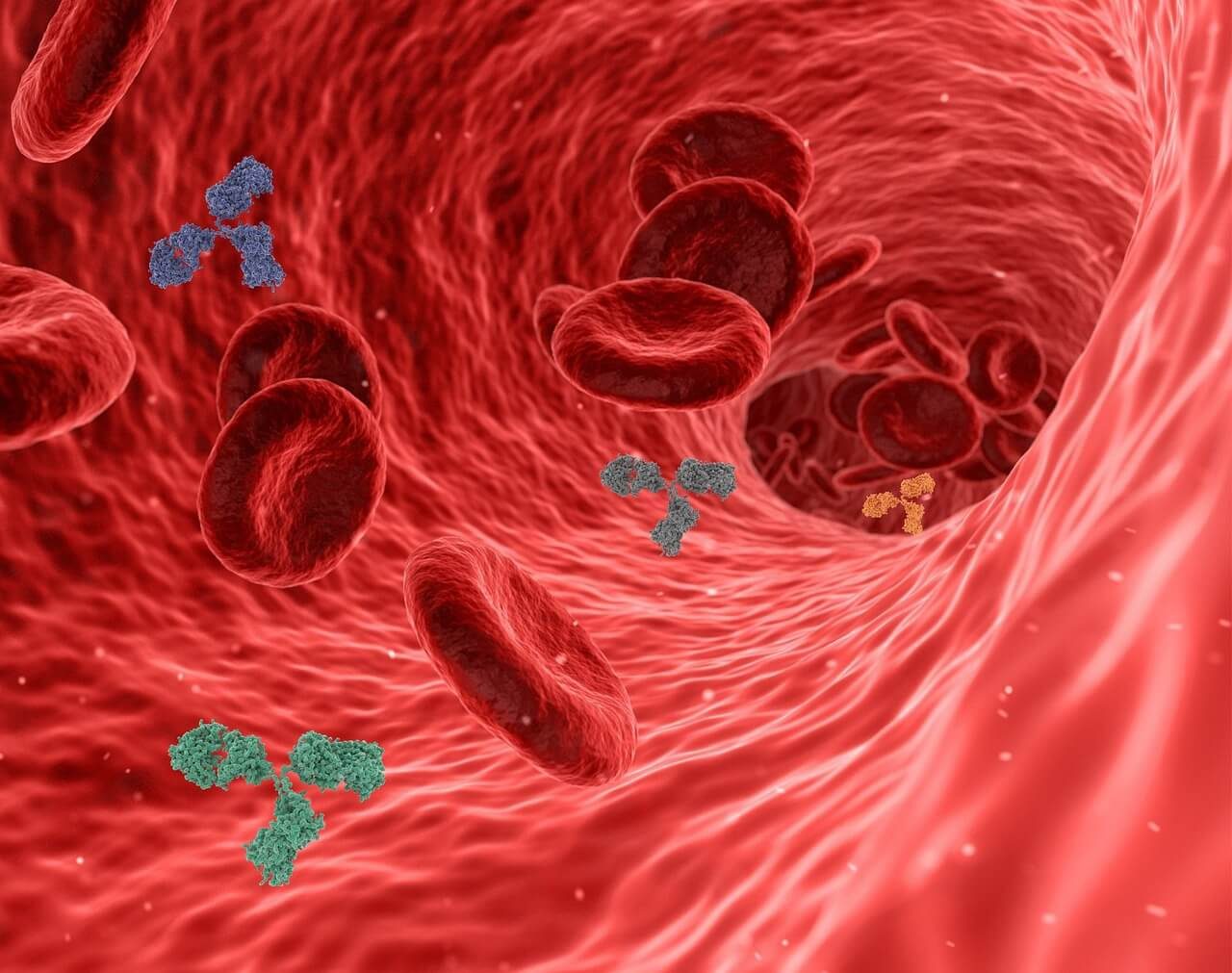Table of Contents
How Omega-3 Fights Inflammation: Introduction
Omega-3 long-chain polyunsaturated fatty acids — EPA (eicosapentaenoic acid) and DHA (docosahexaenoic acid) — influence inflammation at multiple, complementary levels: from the eicosanoid balance and gene transcription to pro-resolving lipid mediator signaling, immune-cell behavior, and the gut–immune axis. Together, these mechanisms help calm excessive inflammation while supporting healthy immune defense, which is why omega-3s are studied across arthritis, IBD, cardiometabolic disease, and neuroinflamma…
- Shifting Eicosanoid Balance Away from Pro-inflammatory Signals: EPA and DHA get incorporated into cell membranes and compete with arachidonic acid (AA) for cyclooxygenase and lipoxygenase enzymes. This shifts the lipid mediator profile away from AA-derived prostaglandins/leukotrienes (often pro-inflammatory) toward less-inflammatory or pro-resolving derivatives of EPA/DHA, contributing to a lower inflammatory tone.
- Recent reviews in atherosclerosis and lipid biology reiterate that a higher AA: EPA balance favors pro-inflammatory eicosanoids, whereas greater EPA availability promotes resolving lipid mediators.
- Producing Specialized Pro-Resolving Mediators (SPMs): EPA and DHA are substrates for resolvins, protectins, and maresins — collectively called specialized pro-resolving mediators (SPMs). These mediators do not suppress immunity; they actively resolve inflammation, helping stop neutrophil over-recruitment, enhance clearance of apoptotic cells, and promote tissue repair. A 2024 expert consensus (Serhan et al.) and recent reviews emphasize SPMs as the biochemical basis for omega-3’s resolution biology and a next chapter for fish-oil science.
- Regulating Immune-Cell Function and Inflammatory Signaling: Omega-3s modulate macrophages, neutrophils, and T cells, shifting phenotypes toward pro-resolving/anti-inflammatory states. Mechanistically, they engage PPARs and certain GPCRs (e.g., GPR120/FFAR4) and can blunt NF-κB and inflammasome activation — key hubs that drive cytokine expression. A 2024 mechanistic review summarizes these receptor- and transcription-factor-level actions with contemporary evidence.
- Lowering Circulating Pro-inflammatory Cytokines (Clinical Evidence): Beyond mechanisms, clinical data show changes in inflammatory biomarkers. A 2024 meta-analysis of 33 trials (n≈2,000) reported that omega-3 supplementation significantly reduced IL-6 and TNF-α, with supportive (graded) evidence quality for IL-6 and directional benefits for other markers (e.g., CRP). Broader umbrella reviews similarly report improvements in CRP/TNF-α/IL-6 in diverse adult populations.
- Clarifying the “Antioxidant” Question: Omega-3s are not direct free-radical scavengers the way classical antioxidants are. Instead, they support oxidative balance indirectly by dampening upstream inflammatory signaling and generating SPMs, which reduces oxidative stress at the tissue level. Contemporary reviews advise this more precise wording in place of “omega-3s are antioxidants.”
- Modulating Nuclear Transcription Factors: EPA/DHA-derived signals can down-regulate NF-κB–driven genes and activate PPARs, shifting gene expression away from pro-inflammatory cytokines and toward pro-resolving/anti-inflammatory programs. These effects align with observed reductions in IL-6/TNF-α in clinical studies.
- Supporting a Healthier Gut–Immune Axis: Emerging evidence links omega-3 status to the composition and function of the gut microbiota, often showing increases in beneficial taxa (e.g., Bifidobacterium, Akkermansia) and higher short-chain fatty acids — changes associated with lower gut and systemic inflammation. Recent 2025 reviews highlight omega-3–microbiome crosstalk and its relevance to inflammatory conditions.
Real-World Context: What to Expect Clinically
- Systemic biomarkers: Modest but significant reductions in IL-6 and TNF-α across mixed populations and conditions.
- Resolution biology: Greater emphasis in 2024–2025 literature on SPMs as a measurable correlate of resolution; enriched marine oils can raise peripheral SPMs, linking intake to resolution pathways.
- Disease-specific outcomes: Effects can vary by condition, dose, baseline diet, and formulation. Evidence is strongest for triglyceride lowering and endothelial function, with growing (but condition-specific) data for clinical inflammatory endpoints.
Summary: How omega-3 fights inflammation
Omega-3 fatty acids (EPA and DHA) help the body resolve inflammation naturally by shifting the balance of inflammatory molecules, lowering cytokines like IL-6 and TNF-α, and producing specialized pro-resolving mediators (SPMs). These actions calm chronic inflammation, support immune balance, and protect tissues throughout the body — promoting long-term cardiovascular, metabolic, and cellular health.
Product Quality Matters: Bioavailability and Oxidation Protection
For these mechanisms to translate into benefits, omega-3s must reach tissues fresh and bioavailable. Omega-3s are chemically delicate; oxidation degrades efficacy and can generate irritant by-products.
That’s why our MVS Omega-3 innovation (high-purity rTG form, oxidation protected, argon protection, double-sealed capsules) is meaningful — it helps preserve integrity so EPA/DHA remain effective through the last capsule.
MVS Omega-3 — Setting a New Standard in Purity, Stability, and Bioavailability
Developed by MVS Pharma’s medical and pharmaceutical experts, MVS Omega-3 represents a new generation of scientifically designed Omega-3 supplements. With a 92% natural rTG structure, verified bioavailability of 1207 mg, and our proprietary T-TOX™ oxidation control system, it ensures exceptional purity, stability, and absorption. Each batch meets European Pharmacopeia standards and is tested for over 20 potential contaminants — setting a benchmark for transparency and trust in modern nutritional science.

Not all Omega-3 supplements are created equal. The more unsaturated and effective Omega-3 molecules become, the more sensitive they are to air exposure — making oxidation protection the single most critical factor for preserving both safety and bioavailability. Once oxidation begins, oil turns rancid, loses efficacy, and may even generate free radicals.
At MVS Pharma, this challenge defined our mission. We engineered MVS Omega-3 as a next-generation formulation designed for uncompromised purity, verified stability, and maximum biological usability.
Key Facts:
- 90% Purified Omega-3 Concentration — delivering 1440 mg total oil with 1312 mg active Omega-3s (EPA 784 mg, DHA 518 mg) per serving.
- 92% Re-esterified Triglyceride (rTG) Form — structurally identical to natural fish oil for superior absorption (1207 mg bioavailable) and full physiological compatibility.
- T-TOX™ Total Oxidation Control System — exclusive German oxidation-management technology ensuring freshness and molecular integrity from production to the last capsule.
- Dual-Layer Packaging Protection — prevents oxidation, preserves hygiene, and guarantees stability throughout the product’s entire lifecycle.
- Ultra Thin Capsule Release 3.0™ — 2/3 less gelatin, no plasticizers, and >91% active ingredient load for transparency, purity, and optimized payload.
- Natural Tocopherol Matrix (α, β, γ, δ) — balanced antioxidant system calibrated to protect high-purity oil without destabilization.
- Pharma-Standard Purification & Testing — each batch is verified to meet European Pharmacopeia standards and is screened for over 20 contaminants, including heavy metals, PCBs, dioxins, PAHs, and plasticizers.
The result is an ultra-pure, oxidation-protected Omega-3 that maintains its natural structure, freshness, and full efficacy until the final dose — ensuring consistent support for cardiovascular, cognitive, visual, and immune health.
Disclaimer: As a service to our readers, MVS Pharma GmbH publishing provides access to our library of archived content in our blog. Please note the date of the last review or update on all articles. No content on this site should ever be used as a substitute for direct medical advice from your doctor or other qualified clinician.
Sources:
- Inflammation resolution & SPMs (consensus/reviews): Serhan et al., 2024 (FASEB); narrative and focused reviews on SPMs and future of fish-oil/SPM therapeutics.
- Eicosanoid balance (AA vs EPA): Atherosclerosis/ATVB reviews on lipid mediator balance and a 2025 eicosanoid-pathway overview.
- Cytokine reduction (clinical): 2024 meta-analysis (IL-6/TNF-α) and umbrella meta-analysis on CRP/TNF-α/IL-6.
- Mechanisms (NF-κB, PPARs, GPCRs): Mechanistic review, 2024.
- Gut–microbiome link: 2025 open-access review and 2025 CVD-focused review.
- SPMs in humans (biomarker evidence): Increased peripheral SPMs with enriched marine oil.


